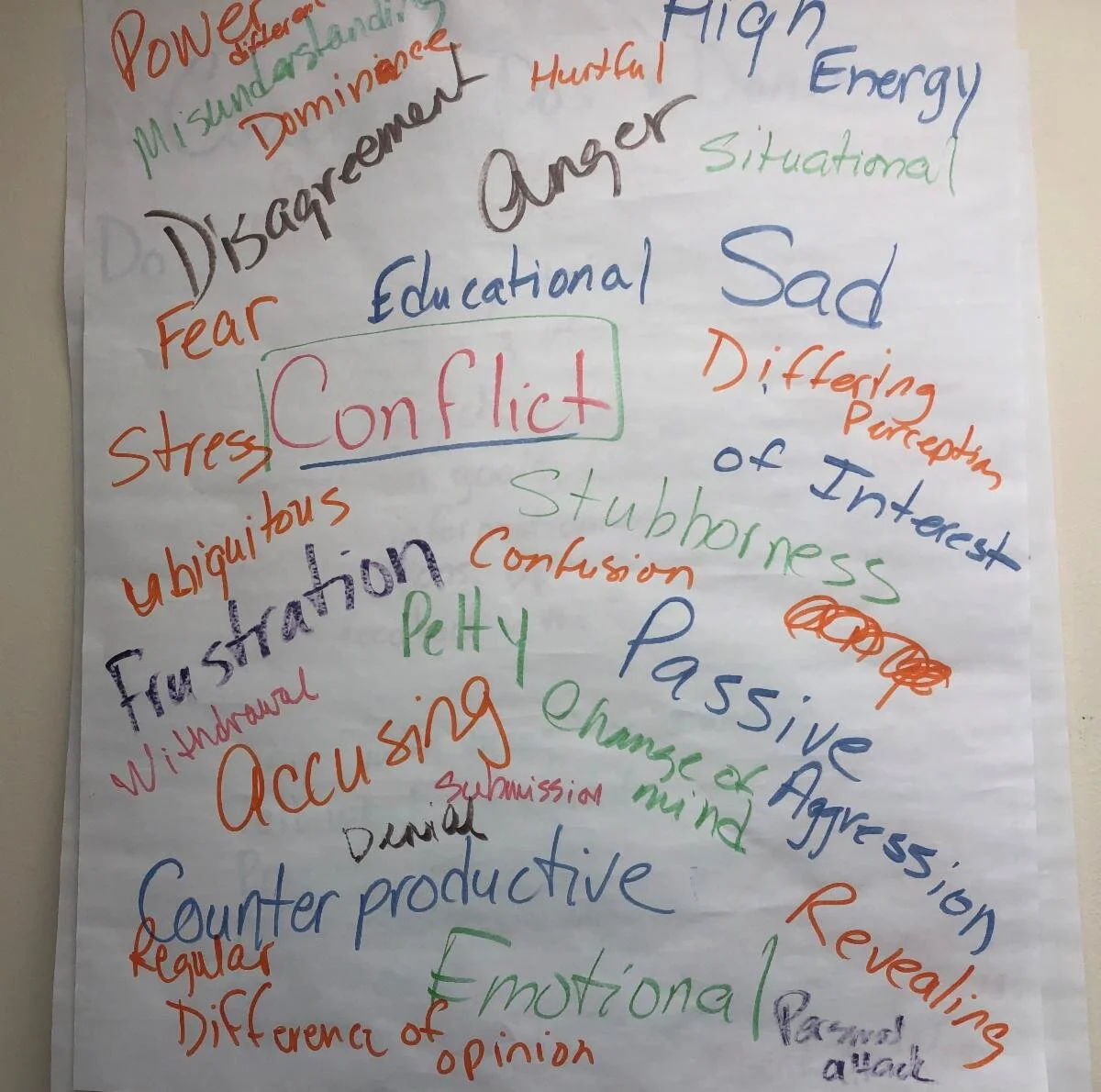WHILE WE ARE KEEPING SOCIAL DISTANCE AND HAVE A LOT OF TIME ON OUR HANDS, LET’S DO SOME CONFLICT RESOLUTION…
CONFLICT COMPONENTS - VALUES
What are your personal values?
The conflict iceberg
The conflict iceberg gives us a good perspective on where values are in relationship with any conflict. Felix holds strongly to his value in the importance of family and and thinks its important to stay close with his family members on Martha's Vineyard. He also holds a competing value in being an independent gay man. One value seems to be guiding him to move off Island to a southern city with an urban experience. The other value presses him to stay on the Island close to his sister and the next generation. This is a conflict. Much of this internal conflict between values is playing out under the surface.
We can't see below the surface to see a clear picture of the other person's values, in the section of the iceberg that is hidden. So we have to pay close attention and try to be aware of how other's values play out in the midst of a controversy. Sometimes people are surprised that they, themselves, are so strongly driven by one or another set of values. That's why the rule is: the bigger the conflict, the slower you move. You have to study the other person and yourself and think about why the conflict has become so fraught. See Slow your roll As well, you will need to inspect values when you work to Analyze conflict
Conflicts are driven by values
Pick a conflict, any conflict. You don't have to look too deeply to see that the conflict is being fueled by each individual's values. In mediation we often hear, that 'its the principle' that is driving the energy around the conflict. Principles and values are relatively synonymous in this case. Fairness, truthfulness, attention to details, paying your debts. Put two divergent sets of values up against each other in a situation and presto, you've got a conflict. If individuals don't have a value that is being challenged, generally, there is not much of a conflict.
Do this:
Look at the big list of values below. Pick out your strongly held personal values. Try to put them into priority order. What value is most important to you? Where is it located in your life?
Explore values in these articles. Values and values meaning.
Talk to others in your life about their values. Try this especially with others who have different backgrounds that you are less aware of.
Look back on your past life. Have your values evolved since your childhood? Which values do you want to hold in the future?
























